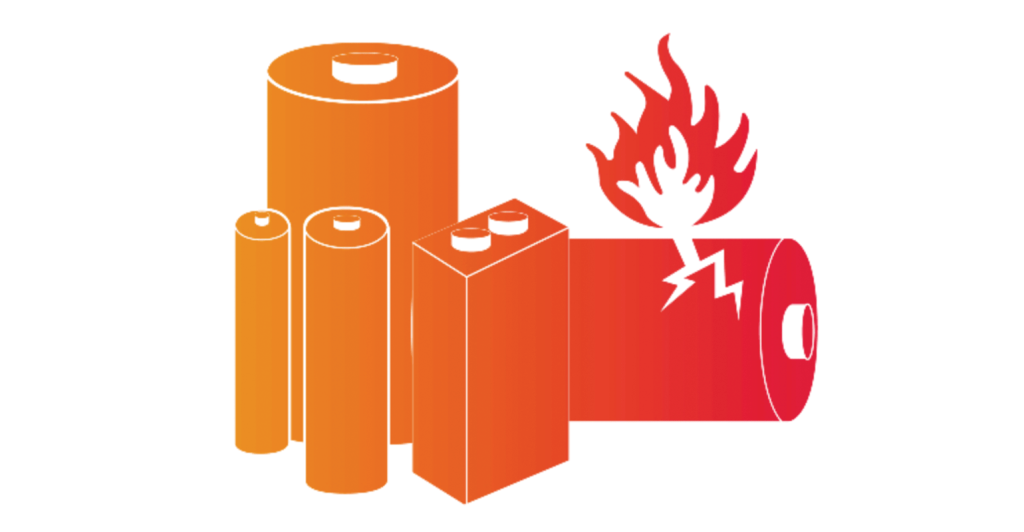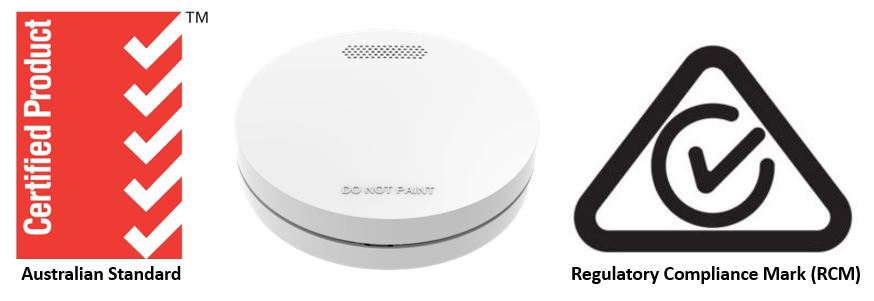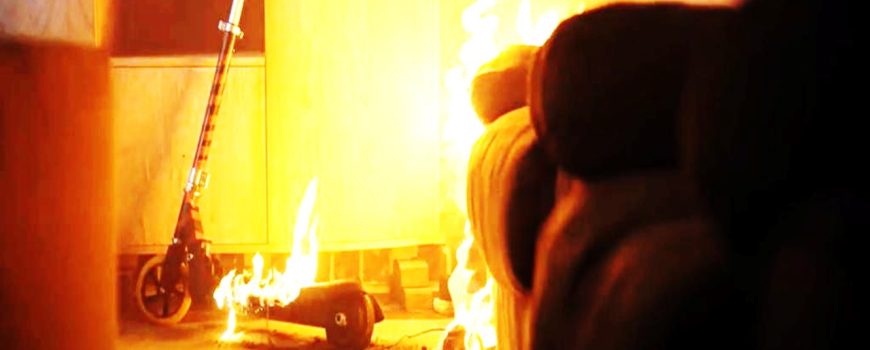Is your 10-year lithium smoke alarm battery a cause for concern? In recent years, Australia has seen a rapid rise in the adoption of lithium-ion battery technology, and Queensland is no exception. These small, lightweight, and highly efficient batteries power everything from smartphones and laptops to e-scooters, e-bikes, and even household renewable energy storage systems. While lithium-ion batteries have revolutionized convenience and energy efficiency, their increasing use has also been linked to a troubling rise in battery-related fires in Queensland homes.
QLD Lithium-Ion Battery Fires Increasing Exponentially
Data collated from Australian state fire departments indicate that more than 450 fires across this country have been linked to lithium-ion batteries since 2021 (including 157 in Queensland). Several of these fires have garnered significant media attention – see below.
Close call! e-scooter battery fires extremely difficult to extinguish
What Is The Cause Of Lithium-Ion Battery Fires?
Numerous factors contribute to this alarming safety trend, but one of the primary culprits behind lithium-ion battery fires is improper charging practices. If incompatible chargers are used, or devices like e-scooters are left charging unattended for extended periods, it can lead to overheating and a subsequent lithium-ion battery fire.

Numerous factors contribute to this alarming safety trend, but one of the primary culprits behind lithium-ion battery fires is improper charging practices. If incompatible chargers are used, or devices like e-scooters are left charging unattended for extended periods, it can lead to overheating and a subsequent lithium-ion battery fire. Another common cause of lithium-ion battery fires stems from manufacturing defects in either the battery charger or the battery itself. Poor adherence to quality standards during manufacture can lead to internal faults, increasing the risk of overheating and fire.

E-scooters and e-bikes, due to their nature of use, are often subjected to rough handling and exposure to environmental elements. Consequently, damage to the battery can occur, leading to internal short-circuits and potential fires. Even seemingly minor physical damage to the battery’s protective casing can create a pathway for ‘thermal runaway’, triggering a catastrophic fire event.
When lithium-ion batteries fail, they undergo thermal runaway, involving the violent bursting of one or multiple battery cells, releasing toxic, flammable, and explosive gases, and resulting in an intense, self-sustaining fire. Putting out a lithium-ion battery fire is challenging, as it escalates rapidly with intense heat and cannot be easily extinguished with water or regular fire extinguishers. Additionally, such fires often reignite several times after being extinguished.
ABC report – dangers of lithium-ion batteries in Australia
Is Your 10-Year Smoke Alarm Battery A Fire Hazard?
What about my smoke alarm battery – isn’t it also a lithium-ion battery?
The 10-year long-life lithium smoke alarm battery differs in design from lithium-ion batteries used in e-scooters, e-bikes, and other rechargeable devices. Unlike lithium-ion batteries, which store high amounts of energy and require frequent charging, the smoke alarm battery inside a photoelectric smoke detector consists of two small 3V, single-use lithium batteries that are fully sealed within the alarm.
These non-replaceable batteries are engineered to deplete slowly and steadily over a 10-year lifespan, ensuring a consistent power supply without the need for repetitive re-charging. Once the smoke alarm battery reaches the end of its life, the entire photoelectric smoke alarm is replaced, maintaining optimal fire protection in your home.
Unlike larger lithium-ion batteries, which pose risks such as thermal runaway, overheating, and fire hazards, the smoke alarm battery is specifically designed to be stable, safe, and maintenance-free. The same fire and thermal runaway risks associated with continuous and repeated recharging of large, high energy lithium-ion batteries are not present with the small non-rechargeable lithium smoke alarm battery. By choosing a certified, high-quality smoke alarm such as ZEN Smoke Alarms, homeowners can enjoy reliable fire safety without worrying about smoke alarm battery malfunctions or potential fire hazards.
Photoelectric Smoke Alarm Battery Safety
When purchasing an interconnected photoelectric smoke alarm, it is essential to choose one that complies with Australian Standard 3786:2014, as indicated by the official Australian Standard red ‘5-tick’ mark on both the packaging and the product itself. This certification ensures that the smoke alarm battery and internal components meet strict safety and performance requirements, reducing the risk of electrical faults.
Additionally, the smoke alarm should carry the Regulatory Compliance Mark (RCM), which confirms compliance with Australian electrical safety regulations as outlined in Australian Standard 3820:2020. This guarantees that the smoke alarm battery and electronic circuits have been rigorously tested for reliability and do not pose an electrical hazard under normal operating conditions.
Avoiding cheap, imported knock-offs without the RCM mark is crucial for smoke alarm battery safety. Non-compliant alarms may fail prematurely or trigger false alarms, putting lives at risk. Investing in a certified, high-quality smoke alarm ensures peace of mind and long-term fire protection for your home.

ZEN interconnected photoelectric smoke alarms – symbols of smoke alarm battery safety compliance
Watch lithium-ion battery fires in this video
Conclusion
The surge in lithium-ion battery fires in Australia calls for a collective effort from manufacturers, regulators, and users to address this growing concern. While the benefits of lithium-ion batteries are undeniable, the risks associated with their usage demand immediate attention. By enhancing safety regulations, improving manufacturing standards, educating and promoting responsible usage and recharging practices, we can embrace the lithium-ion battery revolution in QLD while ensuring a safer and more sustainable future for all.
To further protect your home and loved ones, it is important to have a reliable smoke alarm battery that provides early detection of fire hazards. ZEN photoelectric smoke alarms are designed to detect smouldering fires, including those caused by lithium-ion battery failures, giving you and your family valuable time to respond. Unlike traditional alarms, they feature a safe non-removeable 10-year smoke alarm battery, ensuring maintenance-free operation without the hassle of replacing batteries. For more information on lithium-ion battery fire safety, refer to the QLD Fire Department or fire authorities in other states. Stay informed, stay prepared, and prioritize fire safety in your home.

Want to know more? Watch our ZEN Smoke Alarm YouTube channel or call us on 0478 596 402 today
We love talking smoke alarms!
ZEN Photoelectric Smoke Alarms
New Farm, QLD, 4005

